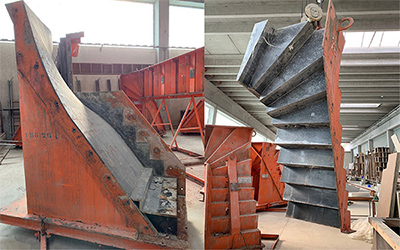-

Email Us
sale@lscmagnetics.com -

Contact Number
+86 -13559234186

Email Us
sale@lscmagnetics.com
Contact Number
+86 -13559234186
Precast components vs. Traditional Construction: Who Will Lead the Future?
Mar 20, 2025
The construction industry is undergoing a quiet revolution. Precast components technology has gradually become the new favorite of the construction industry with its advantages of high efficiency, environmental protection, and controllable quality. So, what are the advantages of prefabricated components compared to traditional buildings?
1. Efficiency and speed:
Factory production, doubled efficiency: Prefabricated components are standardized in the factory, not affected by weather, can be operated around the clock, and greatly improve production efficiency.
On-site assembly, fast construction: After the prefabricated components are transported to the site, they only need to be assembled, which greatly shortens the construction period and saves 30%-50% of time compared to traditional buildings.
2. Quality and safety:
Factory environment, controllable quality: Prefabricated components are standardized in the factory, using advanced equipment and technology, and the quality is more stable and reliable.
Reduced on-site operations, low safety hazards: Prefabricated components reduce on-site wet operations and high-altitude operations, reduce construction safety hazards, and ensure the life safety of construction workers.
3. Environmental protection and sustainability:
Reduced construction waste, green environmental protection: The waste generated during the production of prefabricated components can be recycled, reducing the generation of construction waste and being more environmentally friendly.
Save materials and reduce energy consumption: Prefabricated components adopt standardized design, which can effectively reduce material waste and reduce building energy consumption, in line with the concept of sustainable development.
4. Cost and benefit:
Scaled production, lower costs: Prefabricated components are produced on a large scale, which can effectively reduce production costs.
Shorten construction period, improve efficiency: Prefabricated components have a short construction period and can be put into use in advance, improving the return on investment.
5. Design and flexibility:
Modular design, flexible and changeable: Prefabricated components adopt modular design, which can be combined according to different needs to meet diverse building needs.
Personalized customization, highlighting characteristics: Prefabricated components can be customized according to customer needs to create a unique architectural style.


Of course, there are some challenges with prefabrication:
High initial investment cost: Prefabrication plant construction and equipment investment require a large initial investment.
High transportation cost: Prefabrication is large in size and the transportation cost is relatively high.
Limited design flexibility: Prefabrication adopts standardized design, which may be subject to certain limitations in design flexibility.
Prefabricated components and traditional buildings have their own advantages and disadvantages, but in the long run, prefabricated components will become an inevitable trend in the development of the construction industry due to their advantages such as high efficiency, environmental protection, and controllable quality. I believe that in the near future, prefabricated component technology will bring us a safer, more comfortable and sustainable building environment.